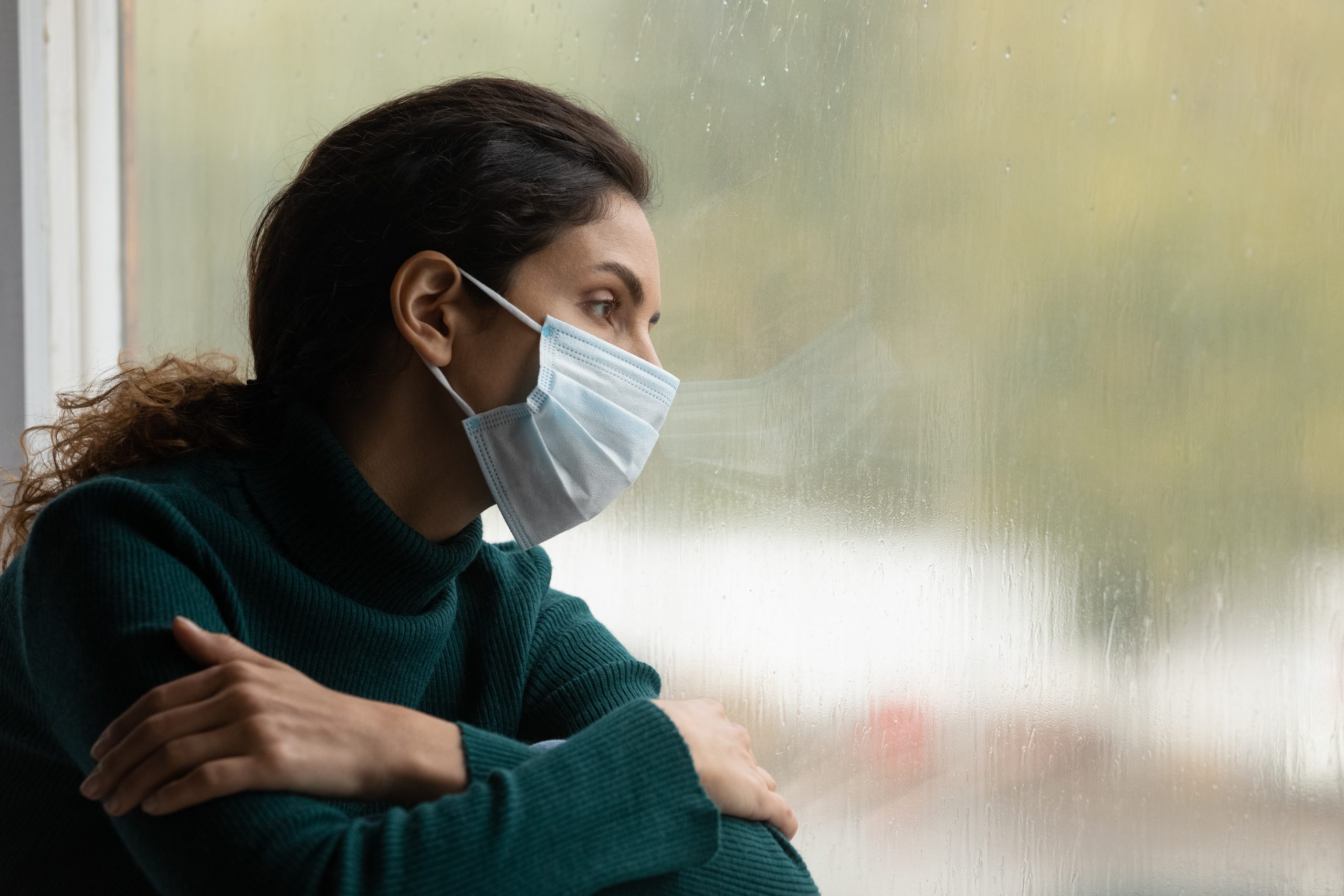In this blog Lynda Keeru reports back from ‘The Independent Panel for Pandemic Preparedness and Response: Presentation of the Panel’s main report, findings and recommendations’ webinar. They explain what is in the report by summarizing the presentations made by speakers.
Helen Clark and Ellen Sirleaf launched the main findings and recommendations of the Independent Panel for Pandemic Preparedness and Response. Both acknowledged that the report is a result of many months of hard work. The Panel was tasked with understanding how COVID-19 moved from being a localized outbreak to becoming a global pandemic. The report highlights the lessons learnt from that and recommends changes which could avert such a catastrophe ever happening again.
Main findings
While some countries are fortunate to have decreasing rates of COVID-19 transmission and increasing vaccine coverage, other countries are witnessing a rise in COVID-19 infections, illnesses and deaths. Sadly, the end of the pandemic is not in sight. The daily news continues to air scenes of hospitals, health workers, and systems overwhelmed and this reminds us of the continuing socioeconomic human tragedy of the pandemic. However, the panel believes that the disaster could have been averted.
Evidence shows that the outbreak became a pandemic because of failures, gaps and delays in preparedness and response. This was partly due to a failure to learn from past pandemics. We heard that there are reviews of previous health disasters that have gathered dust in basements of the United Nations and governments. The world knew that a pandemic was possible.
Speakers described how systems built to respond to pandemics were slow to respond mainly because whilst the virus was spreading information was being hoarded and hence decisions were delayed. As information started to arrive at WHO, the organization wasn’t sufficiently empowered to investigate, validate and then confirm at speed that the dangerous outbreak was occurring.
WHO was constrained and not helped by the international health regulations The panel found that the existing procedures are not at all conducive to taking a precautionary approach. Nonetheless, even with the current systems, the panel believes that a public health emergency of international concern should have been declared by at least the 22 January 2020. Unfortunately, many countries took a ‘wait and see’ approach rather than enacting aggressive containment strategies.
Despite many warnings, far too many countries believed that it would not affect them. The wasted time meant that the health systems became overwhelmed as the disease spread rapidly. These delayed responses in most of the countries were characterized by a lack of coordination, inconsistent or non-existent strategies and by the devaluing of science in decision making processes. Preparedness of the pandemic was under-funded and response funding was too slow. Funding dedicated to responding to the pandemic was not in the scale required and therefore could not avail the much needed medical equipment kickstart the search for diagnostics and therapeutics or even ensure availability of vaccines for all. A case of too little too late.
As expected, the lack of planning and gaps in social protection resulted in the pandemic widening existing inequalities with a disproportionate socio-economic impact particularly on women and other vulnerable and marginalized populations including migrant workers in the informal sector. The impacts of the pandemic have also been very gendered.
Even with the catastrophic effects of the pandemic, a few things have been handled remarkably and deserve a mention and celebration. Topping the list is the stellar efforts of the health workers. Open data and open science collaboration were at the core and the development of vaccines at an unparalleled speed.
Recommendations
The Panel developed detailed and thorough recommendations after their research. In order to ensure an outbreak never becomes a pandemic again, certain immediate actions must be taken.
- High-income countries with a vaccine pipeline for adequate coverage should, alongside their scale up, commit to provide to the 92 low- and middle-income countries with vaccines. At least one billion vaccine doses should be administered no later than the 1 September 2021 and more than two billion doses should be made available through COVAX and other coordinated mechanisms by mid-2022.
- The World Trade Organization and World Health Organization should convene major vaccine producing countries and manufactures to agree to voluntary licensing and technology transfer for COVID-19 vaccines. G7 countries should immediately commit to provide 60% of the US$19 billion required for ACT-A in 2021 for vaccines, diagnostics, therapeutics and strengthening of health systems.
- Every country should apply non-pharmaceutical public health measures systematically and rigorously at the scale the epidemiological situation requires, with an explicit evidence-based strategy agreed at highest level of government to curb COVID-19 transmission.
- For bold and vital reform, leadership must prepare for, and respond to, global health threats and ensure just, accountable and multisectoral action. A high-level Global Health Threats Council led by Heads of State and Government should be established to strengthen the independence, authority and financing of WHO.
- Strengthening WHO means focusing on empowering WHO to take a leading, convening and coordinating role in operational aspects of an emergency response. It also means establishing the financial independence of WHO based on fully earmarked resources and increasing member states’ fees to two thirds of the WHO base programme budget. The process will also require strengthening the authority and independence of the Director-General, by having a single term of office of seven years with no option for re-election. WHO resources and country offices should be equipped sufficiently to respond to technical requests from national governments to support pandemic preparedness and response, including the support to build resilient, equitable and accessible health systems and universal health coverage.
- As part of investing in preparedness to prevent the next crisis, all national governments should update their national preparedness plans against targets and benchmarks set by WHO within six months, ensuring that there are appropriate and relevant skills, logistics and funding available to cope with future health crises.
- WHO should formalize universal periodic peer reviews as a means of accountability and learning between countries. The International Monetary Fund should also routinely include a pandemic preparedness assessment, including an evaluation of economic policy response plans, as part of consultation with member countries.
- There is also need for a new agile and rapid surveillance information and alert system. This will be done with the guidance of WHO which will establish a new global system of surveillance, based on full transparency by all parties, using state of the art digital tools. The World Health Assembly should grant WHO both the explicit authority to publish information about outbreaks with pandemic potential immediately without requiring the prior approval of national governments and the power to investigate pathogens with pandemic potential with short notice access to relevant sites, provision of samples and standing multi-entry visas for international epidemic experts to outbreak locations. Future declarations of a public health emergency of international concern should be based on the precautionary principle where warranted, as is the case of respiratory pathogens and on clear, objective and published criteria.
- The Panel also recommended that a pre-negotiated platform for tools and supplies be established. This should include the transformation of the current ACT-A into a global end-to-end platform to deliver the global public goods of vaccines, therapeutics, diagnostics and essential supplies. There is also need to secure technology transfers and commitment to voluntary licensing in all agreements where public funding has been invested in research and development. Establishing stronger regional capacities for manufacturing, regulation and procurement of needed tools is required for equitable and effective access to vaccines, therapeutics, diagnostics and essential supplies as well as clinical trials.
- Raising new international financing for pandemic preparedness and response was reiterated by the speakers. They expounded this by saying that this should be done by creating an international pandemic preparedness and rapid surge financing response, with the capacity to mobilize long term contributions. There should be an ability to pay formula adopted whereby larger and wealthier economies will pay the most. The Global Health Threats Council will have the task of allocating and monitoring funding from the instrument.
- Finally, and most importantly; it is very important that heads of states and governments adopt a political declaration at a special session of the UN General assembly committing to transforming pandemic preparedness and response and adopt a pandemic framework.
The report provides much to think about. Although not a central pillar of the webinar, a focus on gender is an important element of pandemic preparedness and we will return to this issue as the recommendations of the Panel are turned into action.
Presenters:
The presenters at the event were Helen Clark and Ellen Johnson Sirleaf. In some cases we have quoted them verbatim to try and ensure the accuracy of our interpretation.






